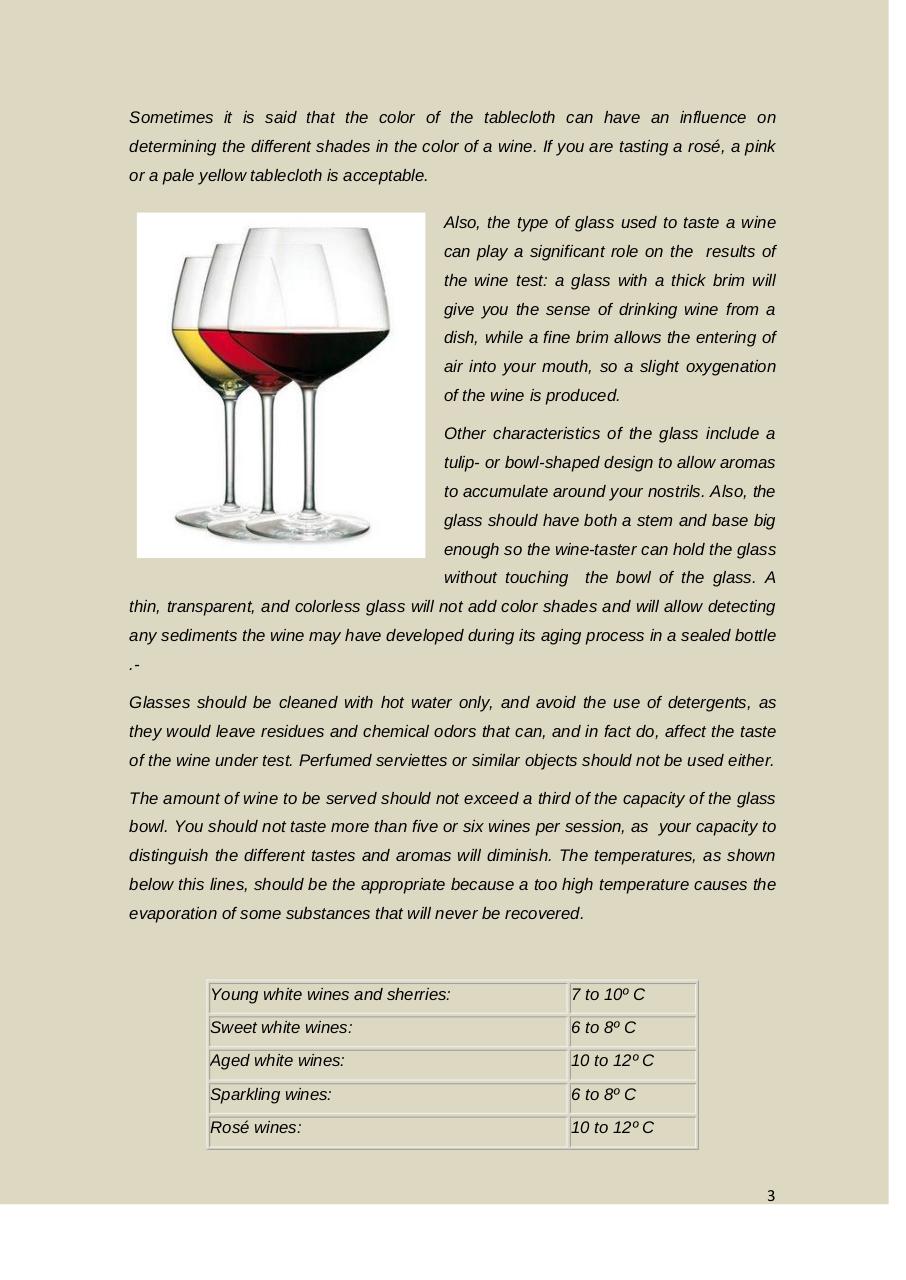Products of the Spanish Gastronomy by Carlos Mirasierras.pdf

Vista previa de texto
Sometimes it is said that the color of the tablecloth can have an influence on
determining the different shades in the color of a wine. If you are tasting a rosé, a pink
or a pale yellow tablecloth is acceptable.
Also, the type of glass used to taste a wine
can play a significant role on the results of
the wine test: a glass with a thick brim will
give you the sense of drinking wine from a
dish, while a fine brim allows the entering of
air into your mouth, so a slight oxygenation
of the wine is produced.
Other characteristics of the glass include a
tulip- or bowl-shaped design to allow aromas
to accumulate around your nostrils. Also, the
glass should have both a stem and base big
enough so the wine-taster can hold the glass
without touching the bowl of the glass. A
thin, transparent, and colorless glass will not add color shades and will allow detecting
any sediments the wine may have developed during its aging process in a sealed bottle
.Glasses should be cleaned with hot water only, and avoid the use of detergents, as
they would leave residues and chemical odors that can, and in fact do, affect the taste
of the wine under test. Perfumed serviettes or similar objects should not be used either.
The amount of wine to be served should not exceed a third of the capacity of the glass
bowl. You should not taste more than five or six wines per session, as your capacity to
distinguish the different tastes and aromas will diminish. The temperatures, as shown
below this lines, should be the appropriate because a too high temperature causes the
evaporation of some substances that will never be recovered.
Young white wines and sherries:
7 to 10º C
Sweet white wines:
6 to 8º C
Aged white wines:
10 to 12º C
Sparkling wines:
6 to 8º C
Rosé wines:
10 to 12º C
3
